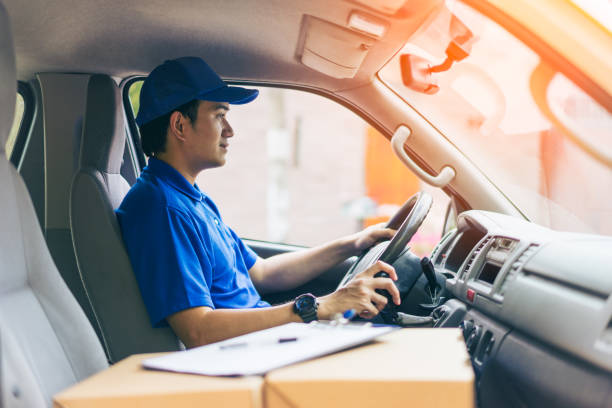Customs clearance and delivery are essential components of the international shipping process, ensuring that goods comply with regulatory requirements and are transported efficiently from the origin to the destination. Customs clearance involves managing the regulatory processes required for goods to enter or exit a country, while delivery focuses on the final transport of goods to the recipient’s address.
What is Customs Clearance?
Customs clearance is the process required to get goods through customs authorities and ensure compliance with national and international trade regulations. This process includes:
1. Documentation: Preparing and submitting essential documents such as commercial invoices, packing lists, certificates of origin, and bills of lading. These documents provide detailed information about the goods, including their value and origin.
2. Duties and Taxes: Calculating and paying any applicable duties, taxes, or tariffs necessary for importing or exporting goods. This can include customs duties, value-added tax (VAT), and other charges.
3. Regulatory Compliance: Ensuring that goods adhere to the regulations of both the exporting and importing countries. This includes meeting import/export restrictions, safety standards, and other legal requirements.
4. Inspection and Verification: Customs authorities may inspect the goods to verify that they match the declared information. This may involve physical examination, sampling, or other verification methods.
5. Customs Declaration: Submitting a customs declaration to provide detailed information about the goods and their intended use. This is required for customs officials to assess and process the shipment.
What is Delivery?
Delivery refers to the final phase of the shipping process, where goods are transported from the point of entry to their final destination. This process includes:
1. Transport Coordination: Organizing the movement of goods from the customs clearance point to the recipient’s address. This involves selecting the appropriate mode of transport (such as road, rail, sea, or air) based on the shipment’s requirements and destination.
2. Final Transportation: Managing the actual transport of goods to ensure they reach their destination in a timely and secure manner. This may include arranging for local delivery services or final mile delivery.
3. Delivery Confirmation: Ensuring that the recipient receives the goods and that delivery is confirmed. This often involves obtaining a signature or other forms of acknowledgment from the recipient.
4. Handling and Distribution: Managing the handling of goods during the final stage of transportation, including unloading, sorting, and distributing as needed to ensure the goods arrive in good condition.
Importance of Customs Clearance and Delivery
1. Compliance: Ensuring that goods comply with all relevant regulations and laws helps to avoid delays, fines, and legal issues. Proper customs clearance is essential for smooth international trade operations.
2. Efficiency: Streamlined customs clearance and delivery processes help to reduce transit times and improve overall efficiency. This can lead to faster delivery of goods and enhanced customer satisfaction.
3. Cost Management: Effective management of customs clearance and delivery can help to control costs associated with duties, taxes, and transportation. Efficient processes can reduce unnecessary expenses and optimize logistics operations.
4. Customer Experience: Providing timely and reliable delivery enhances the customer experience and can contribute to repeat business and positive feedback.
Challenges in Customs Clearance and Delivery
1. Regulatory Complexity: Navigating the complex regulations and requirements of different countries can be challenging. This includes dealing with varying customs procedures, import/export restrictions, and compliance issues.
2. Documentation Errors: Errors or omissions in documentation can lead to delays, fines, or even the seizure of goods. Ensuring accurate and complete paperwork is critical for smooth customs clearance.
3. Inspection Delays: Customs inspections can sometimes lead to delays in processing shipments. This can affect overall delivery times and disrupt supply chains.
4. Logistics Coordination: Coordinating the final transportation and delivery of goods can be complex, particularly for international shipments that involve multiple modes of transport and handling points.
Best Practices for Customs Clearance and Delivery
1. Thorough Preparation: Ensure all necessary documentation is accurately prepared and submitted in advance. This includes understanding the specific requirements for customs clearance in both the exporting and importing countries.
2. Regulatory Awareness: Stay informed about changes in customs regulations and trade laws. This helps to ensure compliance and avoid potential issues with customs authorities.
3. Efficient Coordination: Plan and coordinate the transportation and delivery processes carefully to minimize delays and ensure timely arrival of goods.
4. Clear Communication: Maintain clear communication with all stakeholders involved in the customs clearance and delivery process. This includes customs officials, transport providers, and recipients.
5. Risk Management: Implement strategies to manage risks associated with customs clearance and delivery, such as arranging for insurance and developing contingency plans for potential delays or issues.
Future Trends in Customs Clearance and Delivery
1. Digitalization: The adoption of digital technologies is expected to enhance the efficiency and transparency of customs clearance and delivery processes. This includes using electronic customs declarations and advanced tracking systems.
2. Automation: Automation in customs and logistics processes is likely to increase, with the use of automated systems for documentation, processing, and handling. This can help reduce manual errors and speed up operations.
3. Sustainability: There is a growing emphasis on sustainability, with a focus on reducing carbon footprints through eco-friendly packaging, energy-efficient transportation methods, and sustainable logistics practices.
4. Enhanced Data Analytics: Advanced data analytics will play a larger role in optimizing customs clearance and delivery operations. By analyzing data on shipment routes, customs procedures, and delivery performance, companies can make more informed decisions and improve efficiency.
Customs clearance and delivery are crucial elements of international shipping, involving the management of regulatory requirements and the final transport of goods. Effective customs clearance ensures compliance with laws and smooth trade operations, while efficient delivery enhances customer satisfaction and reduces costs. By addressing challenges and adopting best practices, businesses can improve their customs clearance and delivery processes, meeting the evolving demands of global trade.

